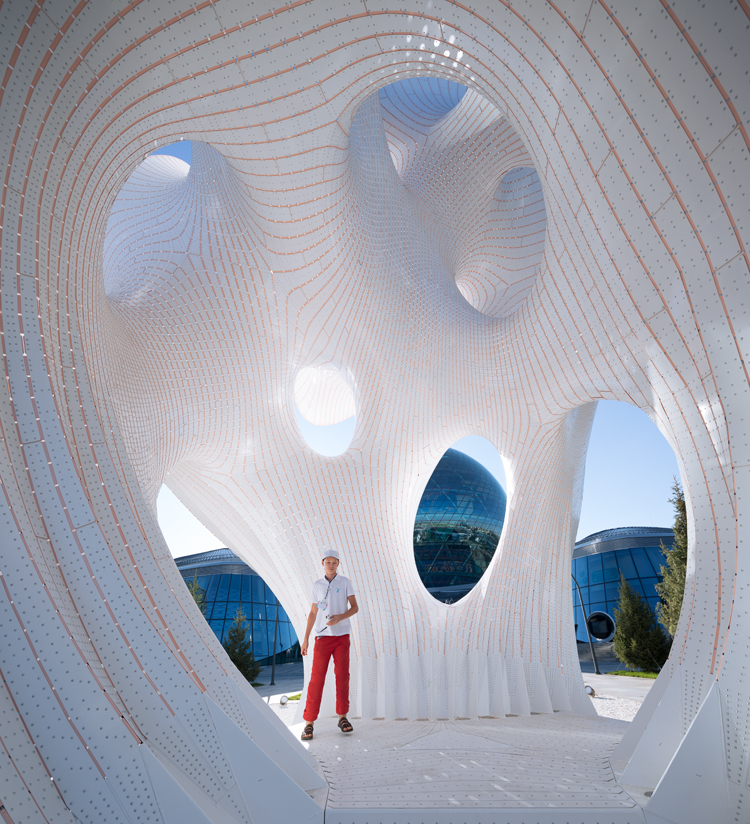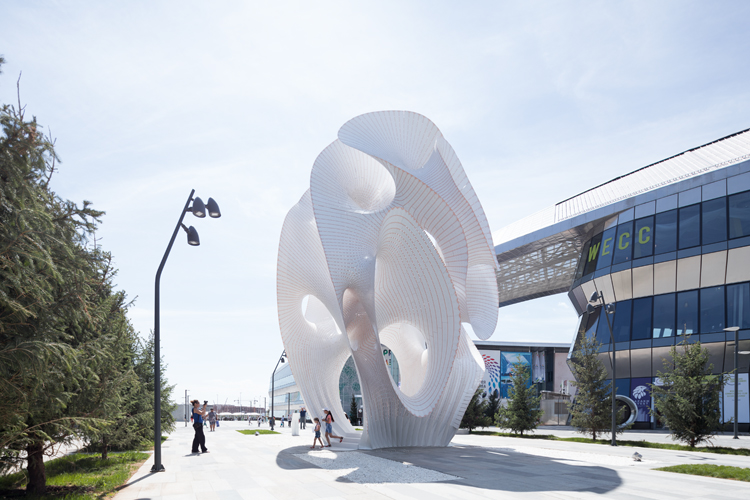MARC FORNES / THEVERYMANY has created Minima | Maxima, a site specific installation made of ultra-thin powdered aluminum in Astana, Kazakhstan. Minima | Maxima provides a moment of contemplation amid the busy grounds of World Expo 2017, transporting visitors into a strange, science fiction world where users can engage with the dynamic structure.
The project extends MARC FORNES / THEVERYMANY’s research and development into achieving structural integrity through ultra-thin, self-supporting structures which find their strength in the double curvature of their form. In the whimsical yet durable universe the studio creates, curves win out over angles; branches, splits, and recombinations make columns and beams irrelevant.

A ‘networked’ surface rolls in, on and around itself, transforming into a space that obscures our preconceived notions of enclosure, entrance/exit, and threshold, while also providing its own support to stand up. The surface is ultra-thin: 6 mm aluminum. If an egg were scaled up to the same height Minima | Maxima, it would be much thicker.

Towards the base of the structure, the rolling surface begins to softly corrugate, its zig-zag angles gently rising into a full pleat as they meet the ground platform. The visual threshold of this transition — from pleated base to smooth and doubly-curved, continuous surface — is subtle, yet its structural effect is significant in achieving the height of 43 feet.

The project is a multi-ply composite: three layers of flat stripes — white and white sandwiching pink — are constructed in tandem, supporting one another as they assume curvature and gain height. One layer never exists independently, but contributes to and benefits from the unified whole. The stripes of each layer move perpendicularly from one another, creating an anistropic composite material (structural property of composite depends on direction) from an isotropic material, such as aluminum (properties of material are mostly the same in all directions).

The system warrants comparison to fiber technology — such as carbon or glass fiber — yet is unique in that unlike fibers, each individual component does not need to be in tension (a straight line), and/or their processing does not require any mold or temporary scaffolding. Also such a composite system is mechanically bonded, allowing for recomposition and corrections during construction.
The project was commissioned for World Expo 2017, an event which showcases architectural and engineering innovations. the structure will remain a permanent installation that incites curiosity and engagement on the site.







all images © Studio NAARO






